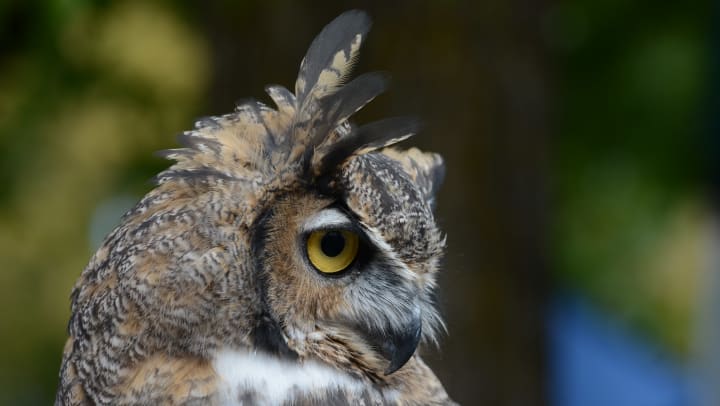In addition to providing delightful songs and entertainment, birds play an essential role in our ecosystem. From predators to prey, enjoy learning about the birds that call the same places home that Touchmark residents do in this second blog post for February, which is National Bird Feeding Month.
Cactus Wren
The largest wren in the United States and the state bird of Arizona, the cactus wren is a comparatively fearless songbird. It is also a common sight on top of cacti, a plant that plays a central role in these wren’s lifecycles by providing a protected place for the birds to roost and nest. Cactus wrens typically build two or three nests per season. As the female incubates her eggs on the first nest, the male builds a second nest. Once the first set of eggs have hatched, the male cares for the young while the female takes up residence in the new nest and begins laying another clutch of eggs. Busy birds!
Great Horned Owl
Great horned owls can live as long as 28 years and can be found from Canada to the Amazon. A formidable predator who mates for life, the great horned owl does not, in fact, have horns, but two feathery ear-like tufts which they can adjust at will. It is thought that these “horns” assist with communication and enable mates and families to silently share information without drawing attention to themselves in the woods (which would tip off their prey to their presence!). These feathers may also be used to assist with camouflaging the owl: when they are erect, they look like tree bark or branches and can help the owl stay concealed as it rests.
Scissor-tailed Flycatcher
Featured on the Oklahoma quarter, the scissor-tailed flycatcher is a beautiful, distinctive-looking bird named for its unique tail, which splits apart like a pair of scissors during flight, and can be twice as long as its body. As their name further suggests, these birds subsist mainly on flies and migrate for this food source and warmth. In spring, the birds return from the south for nesting. Oklahoma is the center of their nesting range, and in this state, they are considered a symbol of spring because they are so numerous. Some farmers predict that when the scissor-tailed flycatcher returns to their fields, there will be no more frost until the fall.
Mountain Bluebird
A close relative of the robin and Idaho’s state bird, the mountain bluebird is one of three bluebirds you might see in the United States (the other two are eastern and western bluebirds). The bluest of the bluebirds, they feed mainly on insects and fruits but can be enticed to a feeder with seeds or water. They spend most of their time alone or with their partner during the mating season, and may form flocks with other songbirds in the wintertime.
Spring may be on its way, but it is still cold out! Help keep the birds in your area warm and happy this season by providing them fresh food—like suet or seeds—and water. And listen to their songs closely—soon the weather will change and their songs will too, as nesting season rolls around and the birds start singing love songs!

